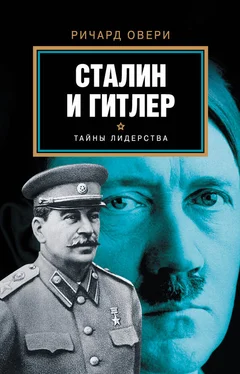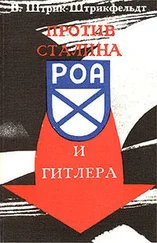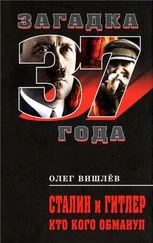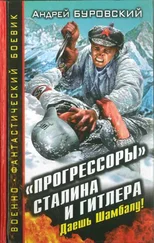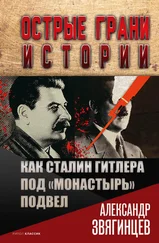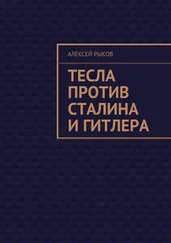10. See for example P. R. Gregory (ed.) Behind the Façade of Stalin’s Command Economy (Stanford, 2001).
11. In general see T. Balderston Economics and Politics in the Weimar Republic (Cambridge, 2002); H. James The German Slump: Politics and Economics, 1924–1936 (Oxford, 1986); H.-J. Braun The German Economy in the Twentieth Century (London, 1990); R. J. Overy ‘The German Economy, 1919–1945’, in P. Panayi (ed.) Weimar and Nazi Germany: Continuities and Discontinuities (London, 2001), pp. 33–73.
12. See in general R. W. Davies (ed.) From Tsarism to the New Economic Policy (Ithaca, NY, 1991); R. Munting The Economic Development of the USSR (London, 1982); P. Gatrell The Tsarist Economy, 1850–1917 (London, 1986).
13. A. M. Ball Russia’s Last Capitalists: the Nepmen, 1921–1929 (Berkeley, Calif., 1987), pp. 162–5; on small-scale trade A. Baykov The Development of the Soviet Economic System (Cambridge, 1947), p. 107. Out of 165,781 enterprises in the production census in 1923, 147,471 (88.5 per cent) were in private hands. In 1922–3, some 75 per cent of the retail trade was also in private hands (p. 55).
14. Munting, Economic Development, p. 97.
15. R. W. Davies, M. Harrison and S. G. Wheatcroft (eds) The Economic Transformation of the Soviet Union (Cambridge, 1994), pp. 36–7, 292. There is no agreed fi gure on the annual rate of industrial growth. The Soviet offi cial fi gure was 16.8 per cent a year.
16. Davies, Harrison and Wheatcroft, Economic Transformation, p. 296; Statistisches Jahrbuch für das Deutsche Reich, 1933 (Berlin, 1934).
17. On Russia see Davies, Harrison and Wheatcroft, Economic Transformation, p. 269. Soviet GNP was 123.7 bn rbls. in 1928, 212.3 bn in 1937 (1937 prices); German GNP from A. Ritschl and M. Spoerer ‘Die Bruttosozialprodukt in Deutschland nach den amtlichen Volkseinkommens-und Sozialproduktstatistiken 1901–1995’, Jahrbuch für Wirtschaftsgeschichte,
37 (1997), pp. 51–2. Growth between 1928 and 1938 was 39 per cent in real terms, from 90.8 bn RM in 192.8 to 12.6.2 bn in 1938.
18. J. Stalin Works (13 vols, Moscow, 1952–55), vol. xii, p. 252, political report of the CC to the XVI Congress of the CPSU, 27 June 1930.
19. R. Zitelmann Hitler: the Politics of Seduction (London, 1999), p. 224; H. Rauschning Hitler Speaks (London, 1939), p. 235.
20. Zitelmann, Hitler, p. 215; Stalin, Works, vol. xi, p. 314; Rauschning, Hitler Speaks, p. 34.
21. J. Stalin Problems of Leninism (Moscow, 1947), p. 300, ‘A Year of Great Change’ Pravda, 7 November 1929.
22. Stalin, Works, vol. xii, pp. 314–20, political report to the XVI Congress; J. Stalin Economic Problems of Socialism in the U.S.S.R. (Peking, 1972), p. 5.
23. Stalin, Works, vol. xii, pp. 311–15.
24. Zitelmann, Hitler, pp. 206, 207.
25. Barkai, Nazi Economics, p. 37.
26. NSDAP Parteitag der Arbeit von 6 bis 13 September 1937 (Munich, 1938), p. 38.
27. O. Wagener Das Wirtschaftsplan der NSDAP (Munich, 1932), p. 5.
28. A. Hitler The Secret Book ed. T. Taylor (New York, 1961), pp. 5–6, 13.
29. Hitler, Secret Book, pp. 14, 24.
30. Hitler, Secret Book, pp. 21–3.
31. K.-H. Minuth (ed.) Akten der Reichskanzlei: Regierung Hitler 1933–1938 (Boppard am Rhein, 1983), vol. i, p. 62, committee for work-creation, 9 February 1933.
32. F. Nonnenbruch Die Wirtschaft in derNS Politik (Berlin, 1935), p. 16.
33. Zitelmann, Hitler, p. 226–7, 232; on planning BA-B, R7/2149, Ohlendorf memorandum, ‘Grundsätze der Volkswirtschaftspolitik’,
p. 9; see too A.-I. Berndt (ed.) Gebt mir vier Johre Zeit: Dokumente zum ersten Vier jahresplan des Führers (Munich, 1937), pp. 233–5, Hitler speech 30 January 1937.
34. BA-B R7/2149, Ohlendorf papers, ‘Unsere Wirtschaftsauffassung. Das Program der NSDAP’, p. 9.
35. H. Trevor-Roper (ed.) Hitler’s Table Talk, 1941–1944 (Oxford, 1984), p. 65.
36. See for example D. L. Hoffmann The Great Terror on the Local Level: Purges in Moscow Factories, 1936–1938’, in J. A. Getty and R. Manning (eds) Stalinist Terror: New Perspectives (Cambridge, 1993), pp. 163–8.
37. F. Seurot Le Systeme economique de l’URSS (Paris, 1989), pp. 55–7; J. Schneider and W. Harbrecht (eds) Wirtschaftsordnung und Wirtschaftspolitik in Deutschland (1933–1993) (Stuttgart, 1996), pp. viii – xxii.
38. V. Barnett Kondratiev and the Dynamics of Economic Development: Long Cycles and Industrial Growth in Historical Context (London, 1998), pp. 21–2, 171; N. Jasny Soviet Economists of the Twenties (Cambridge, 1972), pp. 103–5.
39. Barnett, Kondratiev, pp. 190–96; Jasny, Soviet Economists, pp. 119, 127.
40. Jasny, Soviet Economists, p. 141; E. Zaleski Planning for Economic Growth in the Soviet Union, 1918–1932 (Chapel Hill, NC, 1962), p. 58.
41. Baykov, Soviet Economic System, p. 424.
42. Details in E. A. Rees State Control in Soviet Russia: the Rise and Fall of the Workers’ and Peasants’ Inspectorate 1920–1934 (London, 1987), pp. 190–231; O. K. Khlevniuk In Stalin’s Shadow: the Career of’Sergo’ Ordzhonikidze (London, 1995), pp. 41–52, 167; S. Fitzpatrick ‘Ordzhoni-kidze’s Takeover of Vesenkha: a Case Study in Soviet Bureaucratic Polities’, Soviet Studies, 37 (1985), pp. 154–67.
43. C. Bettelheim La planifi cation sovietique (Paris, 1939), pp. 72–3.
44. Rees, State Control in Soviet Russia, p. 231; Baykov, Soviet Economic System, pp. 453–5.
45. J. Millar ‘Soviet Planners 1936–37’, in J. Degras and A. Nove (eds) Soviet Planning: Essays in Honour of Naum Jasny (Oxford, 1964), pp. 127–9.
46. Miller, ‘Soviet Planners’, pp. 120–21; Baykov, Soviet Economic System, pp. 441, 444.
47. Miller, ‘Soviet Planners’, p. 120; see too H. Hunter ‘Priorities and Shortfalls in Prewar Soviet Planning’, in Degras and Nove, Soviet Planning, pp. 3–31.
48. P. Sutela Socialism, Planning and Optimality: a Study of Soviet Economic Thought (Helsinki, 1984), pp. 13–15, 57–8; M. Harrison Soviet Planning in Peace and War, 1938–1945 (Cambridge, 1985), pp. 14–16, 18–19.
49. Bettelheim, planifi cation sovietique, pp. 74–5; Baykov, Soviet Economic System, pp. 455–7.
50. Baykov, Soviet Economic System, pp. 457–60.
51. T. Dunmore The Stalinist Command Economy: the Soviet State Apparatus and Economic Policy 1945–1953 (London, 1980), pp. 6–10.
52. J. A. Tooze Statistics and the German State, 1900–1945: the Making of Modern Economic Knowledge (Cambridge, 2001), p. 186; Gosplan fi gures in E. Zaleski Stalinist Planning for Economic Growth 1933–1952 (Chapel Hill, NC, 1980) pp. 49–50.
53. BA-B R2/540 Schacht speech on ‘Ziele deutscher Wirtschaftspolitik’, 11 December 1934.
54. BA-B R2/540 ‘Die Ansprache Dr Schachts’ 23 January 1937; Rn/318 ‘Ansprache Dr Schachts’, Berlin 10 May 1938, pp. 12–14. Economic management, said Schacht, ‘must only lead to a healthy and life-sustaining economic order, but not to a schematic economic bureaucratism’.
55. R. J. Overy The Nazi Economic Recovery 1932–1938 (Cambridge, 1996); for a critical assessment of growth strategy see C. Buchheim ‘The Nazi Boom: An Economic Cul-de-Sac’, in H. Mommsen (ed.) The Third Reich between Vision and Reality: New Perspectives on German History 1918–1945 (Oxford, 2001), pp. 79–92.
56. G. Corni and H. Giess Brot, Butter, Kanonen: Die Ernährungswirtschaft in Deutschland unter der Diktatur Hitlers (Berlin, 1997), pp. 81–6, 87–98, 133. By 1938 there were 17,300 offi cials running the Food Estate, with 57,400 farmers used as local ‘farm leaders’.
57. R. A. Brady The Spirit and Structure of German Fascism (London, 1937), pp. 266–72.
58. Tooze, Statistics and the German State, pp. 202–3; see BA-B R11/11 for reports from Grünig on national income estimates and economic balances. See too BA-B R43 II/301, Dr Grünig, ‘Probleme der Wirtschaftslenkung’.
Читать дальше
Конец ознакомительного отрывка
Купить книгу
